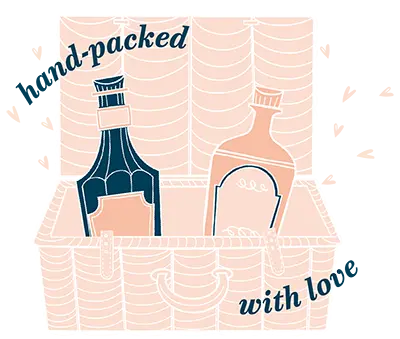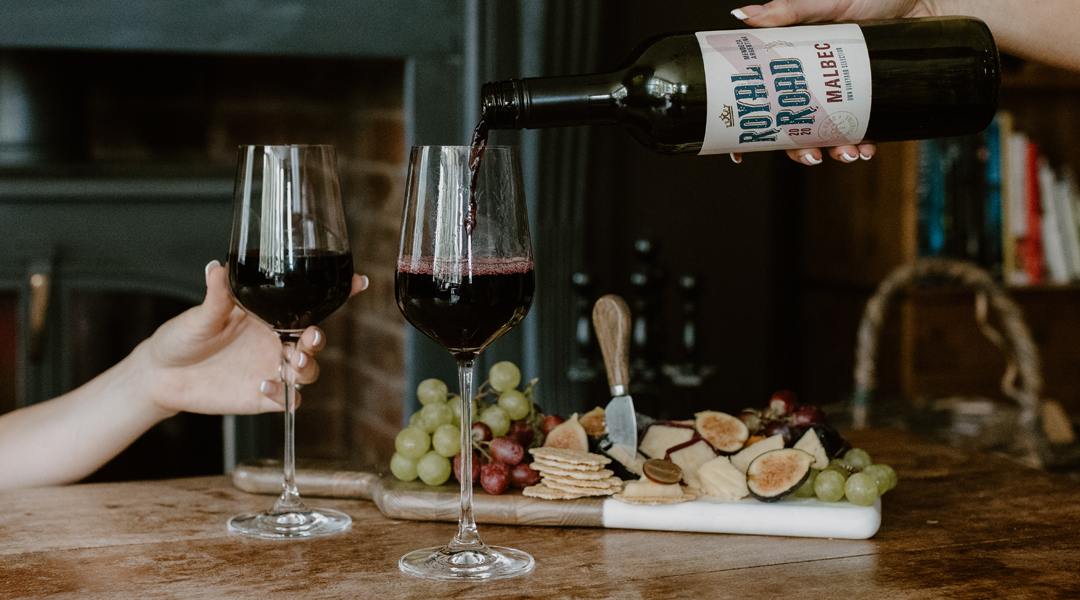
Finding the perfect wine to go with your favourite sweet and savoury foods is often a little daunting, so we have come up with this handy guide to help you through the process.
Let's begin...

Introducing red, white, rosé, sparkling and dessert wines
Red wine is made with black grapes and is red, though this can range from light to bold. Three main subcategories of red wine include fruity dry, herbal dry and sweet, although there are hundreds of more variations running through this scale.
White wine is predominantly produced using white grapes, although black grapes can also be used on occasion. White wines can generally be categorised into sweet – which includes the likes of Riesling or Gewürztraminer – and dry – Sauvignon Blanc and Pinot Blanc, for example.
Rosé wine, like red wine, is produced from black grapes, but where the skins of which are removed during the process before the wine is stained red. It can also be made by blending red wine and white wine, with both of these processes giving rosé its characteristic pink hue.
Sparkling wine can either be red, white or rosé, with a secondary fermentation involved in the winemaking process producing bubbles, hence why it's commonly referred to as 'Fizz'. Despite many drinkers wrongly assuming all sparkling wine to be ‘Champagne’ it can only be referred to as this when it comes from the Champagne wine region in France.
Finally, you have dessert wine, which is a predominantly sweet wine where the winemaking process involves fortifying wine with spirits. They come in both red and white. Port is also sometimes considered a red dessert wine.
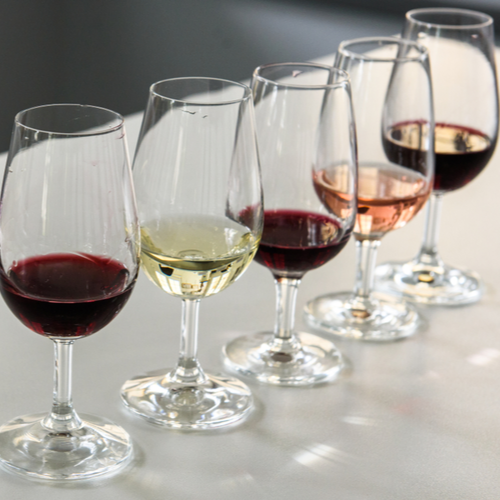
An introduction to wine pairing
While these are the main types of wine, knowledgeable wine lovers will know that the world of wine is as vast as the vineyards in which they are created. There is a different tipple for every occasion...a separate glass to suit all moods.
The versatility of wine must be, at least in part, credited for its popularity. Whether you are having a glass with dinner, a wine and cheese-themed night or are sharing a bottle at the bar, there is something out there for everyone.
Much like there is a wine for every occasion, there is also food to go with every wine. Whether you consider yourself a novice or an expert, or simply want to ensure that you get the right gift for a loved one, below we delve into how to choose the perfect wine to pair with food.
Before choosing any food and wine pairing, you need to identify the basic flavours and tastes involved in the different types of wines; while there are five main types of wine and a plethora of different varieties, the flavours can be narrowed down to three categories for wine pairing. There are red wines which tend to be more bitter, sweet wines which unsurprisingly are sweeter and then more acidic wines which consist of whites, rosés and sparkling varieties.
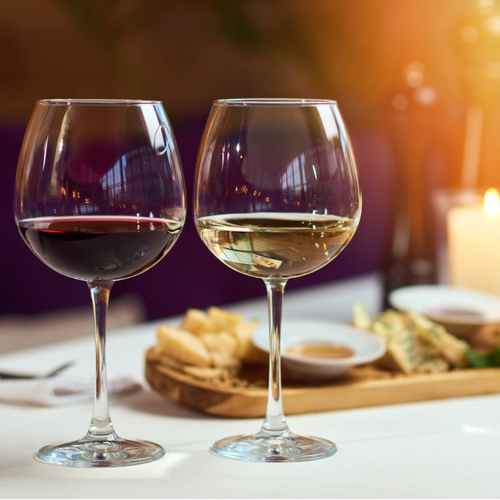
How to pair wine and food
Generally speaking, you can choose to go one of two ways with your wine pairing; you can either combine similar flavours, amplifying the shared tastes in the wine and food, or you can contrast flavours that complement and magnify each other, like a sweet white wine with a spicy dish. These different methods are often referred to as ‘congruent’ or ‘complementary’.
Now, on to the crux of the matter: the rules to follow when choosing a food and wine pairing.
Your choice of wine should always be more acidic than the food itself so, simply put, if you are having acidic food – such as anything with lemon juice or vinegar – you should opt for a wine that is even more acidic than the meal. Indeed, the food will bring out the flavour in the wine that may have otherwise been too overbearing paired with anything else, while the taste of less acidic wines will be underappreciated due to the intensity of the meal. Champagne is a good choice here.
Following a similar logic, the wine should always be sweeter than the food; if the food is sweeter than the wine then it will lose its flavour, so this is something you need to bear in mind when choosing a dinner wine pairing. This applies to spicy food: if you don’t want to enhance the spiciness of the food, then you’re safer pairing a hot meal with a sweeter wine. However, spice can also be a good red wine food match, and a full-bodied red goes fantastically with foods that are mildly spiced – for example, the Wine, Truffle Cheese & Duck Rillette Gift expertly matches a full-bodied Bordeaux from Chateau Grandefont with a duck rillette, as well as crackers, award-winning Snowdonia Truffle Trove Cheese and Black Bomber Cheddar to make the perfect gift.
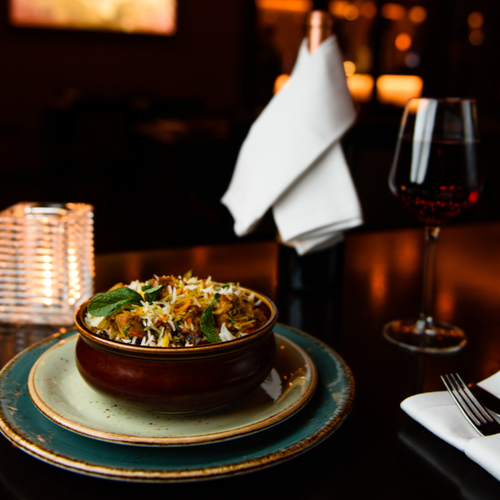
For desserts, the same rule applies; the wine should always be sweeter than your choice of pudding, to ensure the flavour comes through and to prevent any bitter taste. To this end, you should avoid mixing desserts with wines high in tannin (a chemical compound found in the grapes) as these will likely taste bitter. For chocolate (a popular choice of what to eat with red wine), a sweet red is indeed one of your best options, both of which can be found in The Classic Food and Drink Hamper – where melt-in-the-mouth chocolates are mixed with a Royal Road Malbec.
Matching flavours is important. While you can choose to pair congruent or complementary flavours, it’s prudent to mix wines that have the same flavour intensity as the food. Delicate flavours should be matched with delicate wines, while bold should be paired with bold. For example, bold-flavoured meat (such as red meat) should be twinned with a bold red, while whites work better with light-intensity delicate meals – chicken or fish, for example.
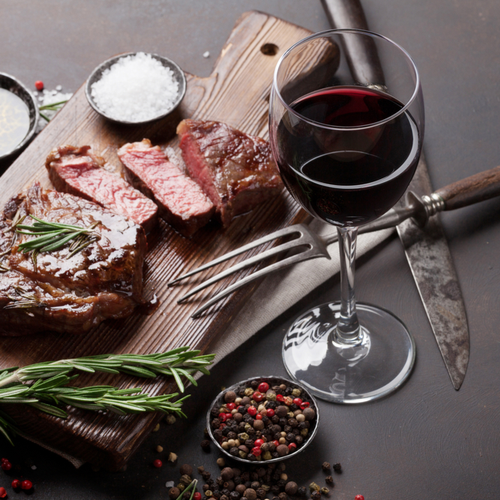
With salty meals, you have a choice when it comes to choosing the ideal wine pairing. An acidic wine, like a Champagne for example, complements the saltiness of your meal, while at the same time having its flavour enhanced by it. You can also choose to pair salty food with a sweet wine, as you will experience a burst of flavours from both.
It would be remiss to discuss food and wine combinations without mentioning cheese. Cheese and wine are a well-known historical pairing, and even have their day – National Wine and Cheese Day celebrated on the 25th of July. One might automatically think of red wine when it comes to pairing wine with cheese, but white wine is often better as it doesn’t overpower the taste of cheese. However, red wine goes brilliantly with strong, firm cheese, like a gouda or cheddar, while port and stilton is a timeless classic.
You’ll find a bottle of Las Carolinas Garnacha in our Classic Red Wine and Cheese Gift Box, which is wonderfully balanced by Snowdonia Cheese Company’s Ruby Mist Cheddar, a cheese blended with white port and a hint of brandy.
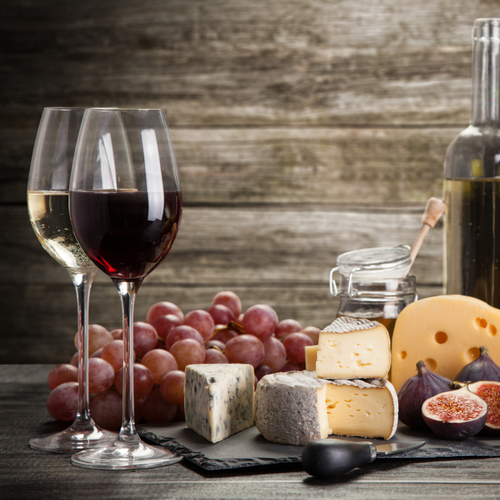

Choose perfectly paired wine and food hampers
Many of our favourite hampers allow you to try your own food and wine pairings, or they can be gifted to loved ones for a celebration, to say thanks or simply just because. We carefully select food items to go alongside our specially chosen wines to bring out the flavours in the selection of products.
Take a closer look at our Gourmet Cheese and Wine Gift Hamper, The Regency Hamper and our Luxury Rosé Hamper.
Happy wine pairing!







